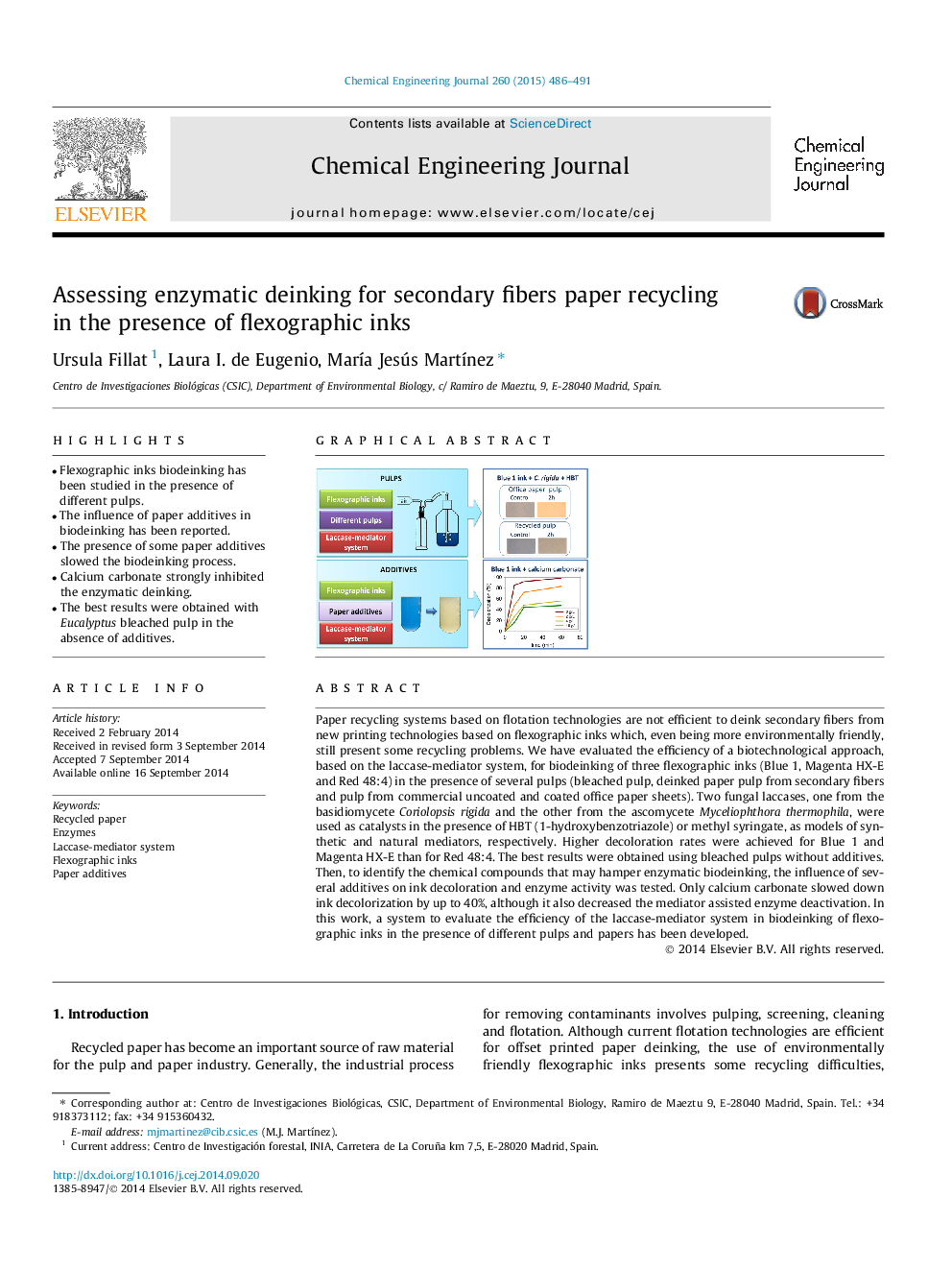| Article ID | Journal | Published Year | Pages | File Type |
|---|---|---|---|---|
| 146761 | Chemical Engineering Journal | 2015 | 6 Pages |
•Flexographic inks biodeinking has been studied in the presence of different pulps.•The influence of paper additives in biodeinking has been reported.•The presence of some paper additives slowed the biodeinking process.•Calcium carbonate strongly inhibited the enzymatic deinking.•The best results were obtained with Eucalyptus bleached pulp in the absence of additives.
Paper recycling systems based on flotation technologies are not efficient to deink secondary fibers from new printing technologies based on flexographic inks which, even being more environmentally friendly, still present some recycling problems. We have evaluated the efficiency of a biotechnological approach, based on the laccase-mediator system, for biodeinking of three flexographic inks (Blue 1, Magenta HX-E and Red 48:4) in the presence of several pulps (bleached pulp, deinked paper pulp from secondary fibers and pulp from commercial uncoated and coated office paper sheets). Two fungal laccases, one from the basidiomycete Coriolopsis rigida and the other from the ascomycete Myceliophthora thermophila, were used as catalysts in the presence of HBT (1-hydroxybenzotriazole) or methyl syringate, as models of synthetic and natural mediators, respectively. Higher decoloration rates were achieved for Blue 1 and Magenta HX-E than for Red 48:4. The best results were obtained using bleached pulps without additives. Then, to identify the chemical compounds that may hamper enzymatic biodeinking, the influence of several additives on ink decoloration and enzyme activity was tested. Only calcium carbonate slowed down ink decolorization by up to 40%, although it also decreased the mediator assisted enzyme deactivation. In this work, a system to evaluate the efficiency of the laccase-mediator system in biodeinking of flexographic inks in the presence of different pulps and papers has been developed.
Graphical abstractFigure optionsDownload full-size imageDownload as PowerPoint slide
